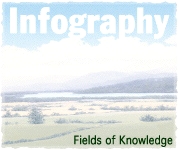
 | |
Eurasian Watermilfoil | |
The following sources are recommended by a professor whose research specialty is Eurasian watermilfoil. |
· Aiken, S.G., P.R. Newroth, and I. Wile. 1979. "The Biology of Canadian Weeds. 34. Myriophyllum spicatum L." Canadian Journal of Plant Science 59: 201-15. Classic biology and taxonomic reference.
· Non-Native Freshwater Aquatic Plants: Eurasian Watermilfoil. Department of Ecology, State of Washington. Good background site with good coverage of control methods. http://www.ecy.wa.gov/programs/wq/plants/weeds/aqua004.html
· Getsinger, K.D., A.G. Poovey, W.F. James, R.M. Stewart, M.J. Grodowitz, M.J. Maceina, and R.M. Newman. 2002. "Management of Eurasian Watermilfoil in Houghton Lake, Michigan: Workshop Summary." Technical Report ERDC/EL TR-02-24, U.S. Army Engineer Research and Development Center. Extensive information on various managment strategies. http://el.erdc.usace.army.mil/elpubs/pdf/trel02-24.pdf
· Grace, J.B., and R.G. Wetzel. 1978. "The Production Biology of Eurasian Watermilfoil (Myriophyllum spicatum L.): A Review." Journal of Aquatic Plant Management 16: 1-11. Strong on biology, physiology and population growth.
· Newman, R.M., D.M. Ward, and J.D. Trexel. Biological Control of Eurasian Watermilfoil. Department of Fisheries and Wildlife, University of Minnesota. Focuses on biological control but maintains extensive bibliography and links. http://fwcb.cfans.umn.edu/research/milfoil/milfoilbc.html
· Smith, C.S., and J.W. Barko. 1990. "Ecology of Eurasian Watermilfoil." Journal of Aquatic Plant Management 28: 55-64. Most recent and thorough review of Eurasian watermilfoil ecology. http://sgnis.org/publicat/papers/smitbark.pdf
· Jacono, C.C., and M.M. Richerson. Nonindigenous Aquatic Species: Myriophyllum spicatum L. U.S. Geologic Survey. Good maps and current distribution information. http://nas.er.usgs.gov/taxgroup/plants/docs/my_spica.html
· Madsen, J.D. 2000. "Advantages and Disadvantages of Aquatic Plant Management." LakeLine 20(1): 22-34. http://www.aquatics.org/pubs/madsen2.htm
· Madsen, J.D., J.W. Sutherland, J.A. Bloomfield, L.W. Eichler, and C.W. Boylen. 1991. "The Decline of Native Vegetation under Dense Eurasian Watermilfoil Canopies." Journal of Aquatic Plant Management 29: 94-99. http://sgnis.org/publicat/apm29.htm
· Madsen, J.D., and C.H. Welling. 2002. "Eurasian Watermilfoil (Myriophyllum spicatum L.)." LakeLine 22(1): 29-30. http://web.archive.org/web/20060928145807/http://www.nalms.org/lakeline/pdf/ll22-1_welling.pdf
· Ramey, V. 2001. Non-Native Invasive Aquatic Plants in the United States: Myriophyllum spicatum L. Center for Aquatic and Invasive Plants, University of Florida, and Sea Grant. http://aquat1.ifas.ufl.edu/seagrant/myrspi2.html
"The Infography about Eurasian Watermilfoil"
http://www.infography.com/content/056094812721.html
© 2009 Fields of Knowledge
Essex, Iowa 51638-4608 USA